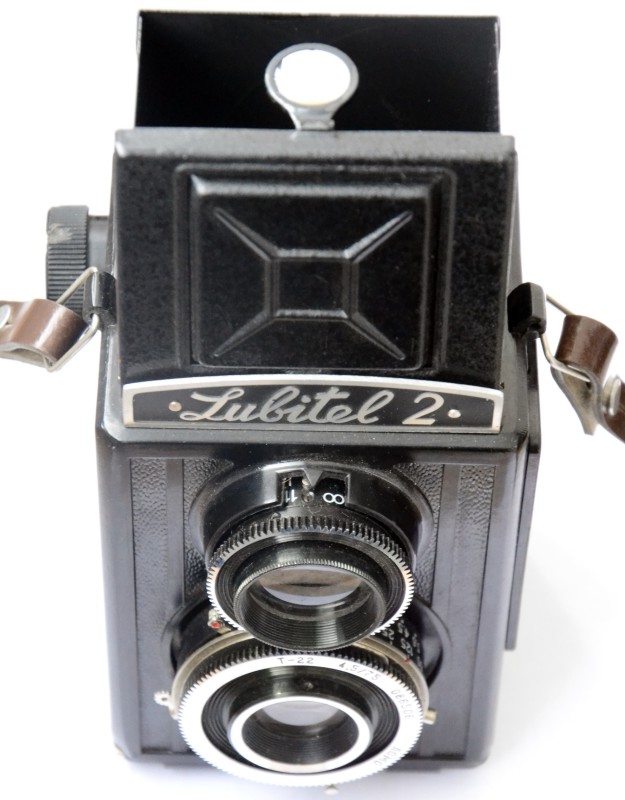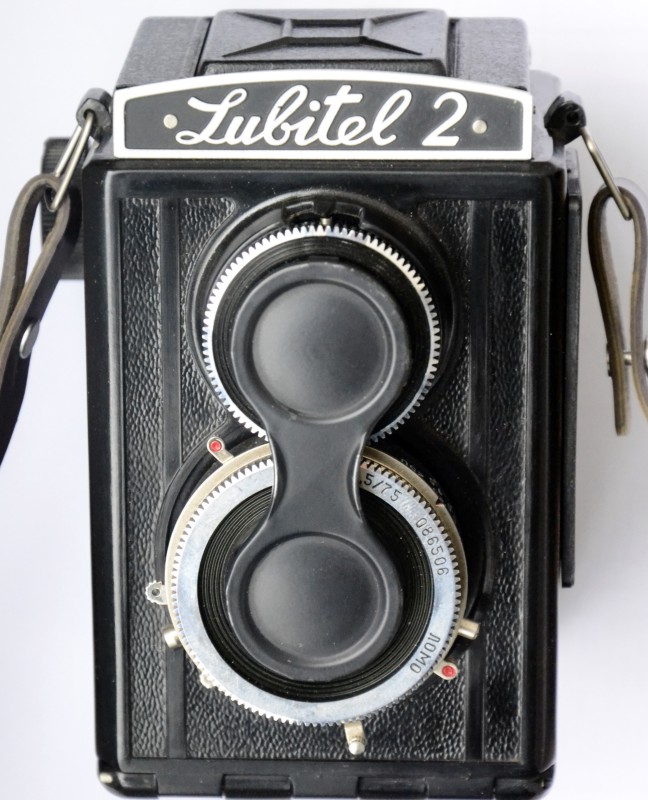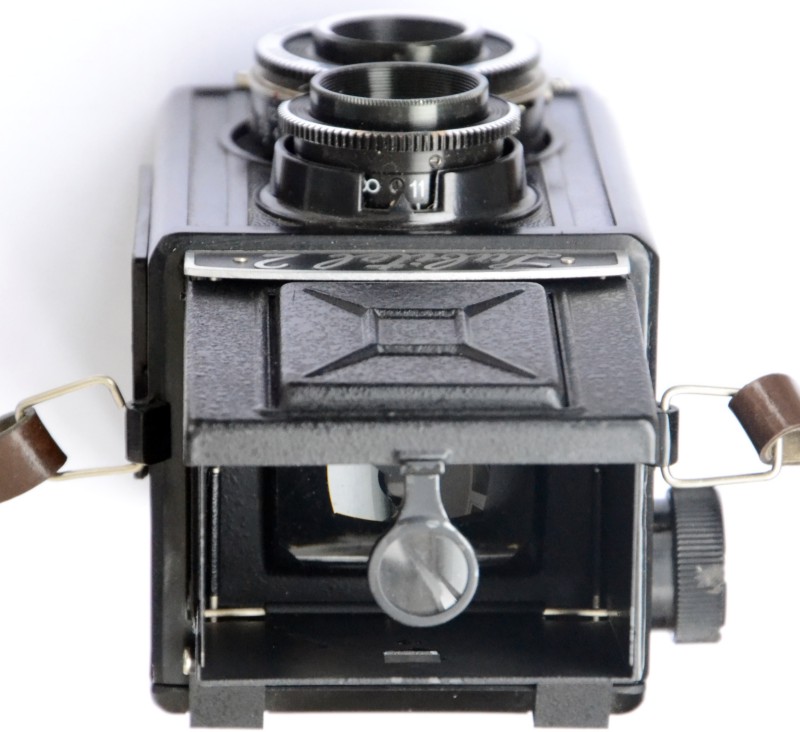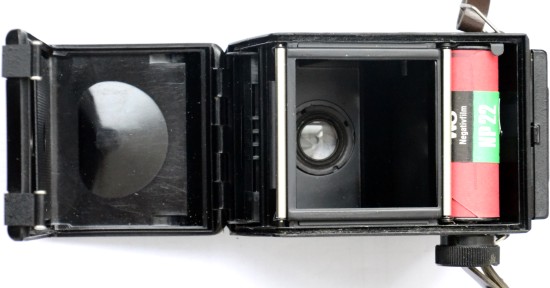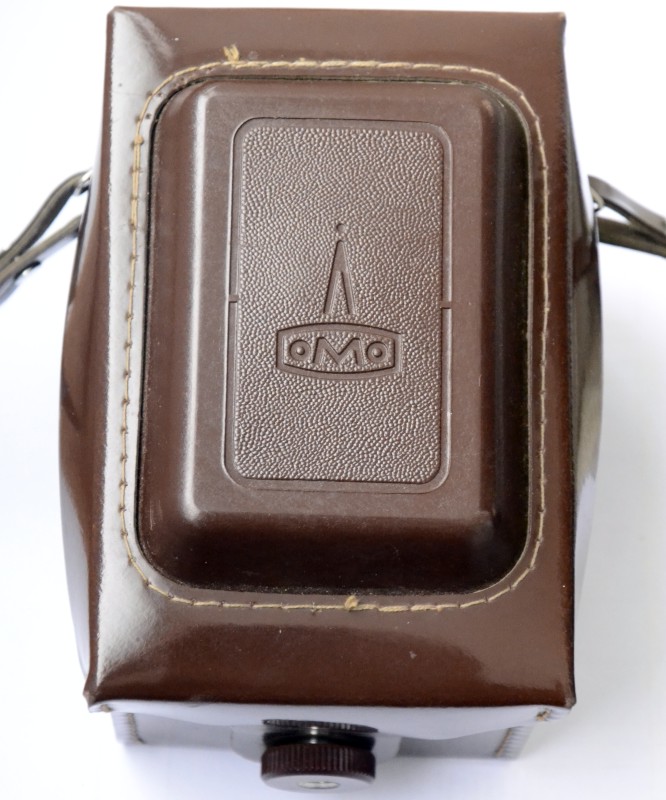PL
Lubitel (cyrillic: Любитель) means „amateur” in Russian. The Lubitel 2 was made in great numbers by the Leningrad GOMZ (later LOMO) factory. More than two million were produced between 1954 and 1980. There are versions with a cyrillic name plate or with one in latin script as the one shown, and it was rebadged for various other markets as Kalimar TLR100, Amatör II, Atlantic and Global 676. It was also produced as a stereo version and sold as the Спутник (Sputnik). The camera body is made of plastic, possibly bakelite. The waist level finder and focusing rings are made of metal. These cameras were delivered with a case and strap made of artificial leather.
There is a stepless aperture scale under the taking lens with apertures from 4.5 to 22. Winding the film is done by a black knob on the right side of the camera. This does not cock the shutter.
The Lubitel has a LOMO T-22 75/4.5 taking lens. It is actually a little wider than the normal 80mm medium format standard lens. The second lens has only 60 mm and f / 2.8 light, which is due to the smaller 40 x 40 mm viewfinder. Instead of an ordinary Fresnel lens, a regular lens with matte in the middle is used, and a small sliding magnifier is used for more precise focusing. This is not a convenient solution.
The shutter is cocked with a red-dotted lever. The aperture and the shutter button are all positioned around the taking lens.
The Lubitel-2 has no framecounter. When you turn the knob in the direction of the little white arrow, frame numbers on the back of the 120 film become visible through the little red window.
The camera was delivered with two types of shutter:
• ZT-5 on times B, 1/10, 1/25, 1/50, 1/100 1/200, and
• ZT-8 on times B, 1/15, 1/30, 1/60, 1/125 1/250. The ZT-8 shutter is also equipped with a self-timer and a flash sync socket.
Details of the exhibit from my collection
Lubitel-2 with a shutter ZT-8 s / n 086506 (placed on the lens). I got the camera fit from Bogdan with the case and lens cover. It is signed by Lomo, i.e. it was produced between 1965 and 1980.
More:
- https://camerapedia.fandom.com/wiki/Lubitel_2
- https://www.collection-appareils.fr/x/html/page_standard.php?id_appareil=12740
- http://cameras.alfredklomp.com/lubitel2/
- http://cameras.alfredklomp.com/lubitel2/manual/
